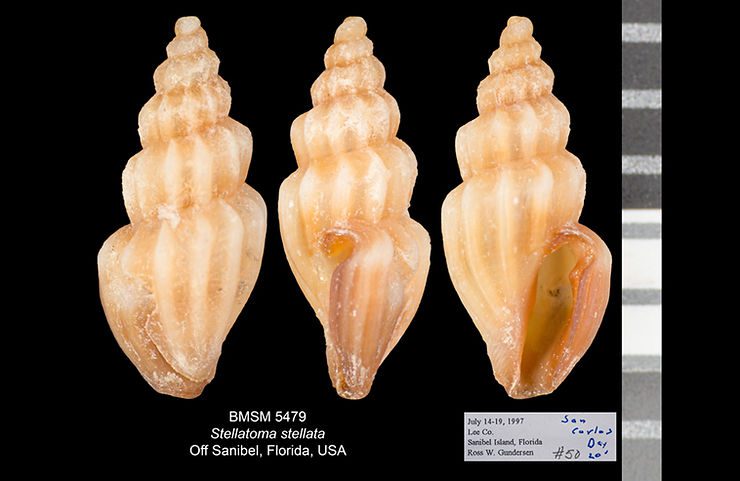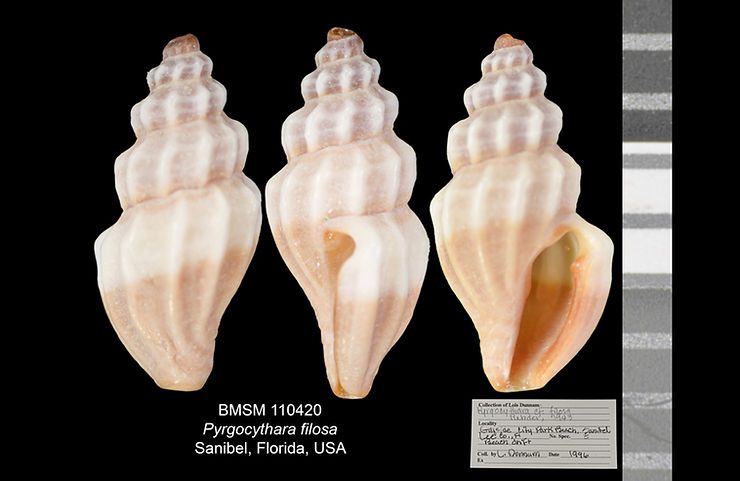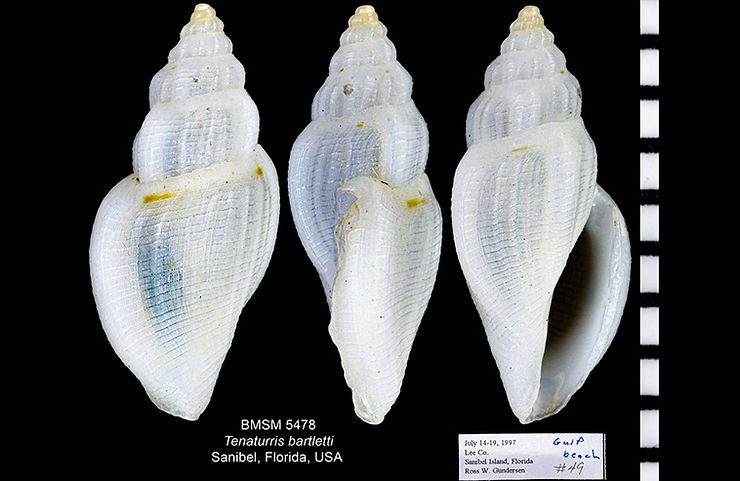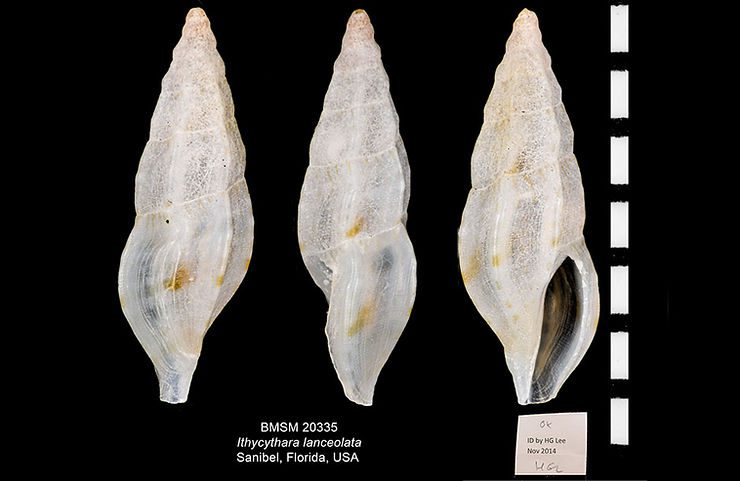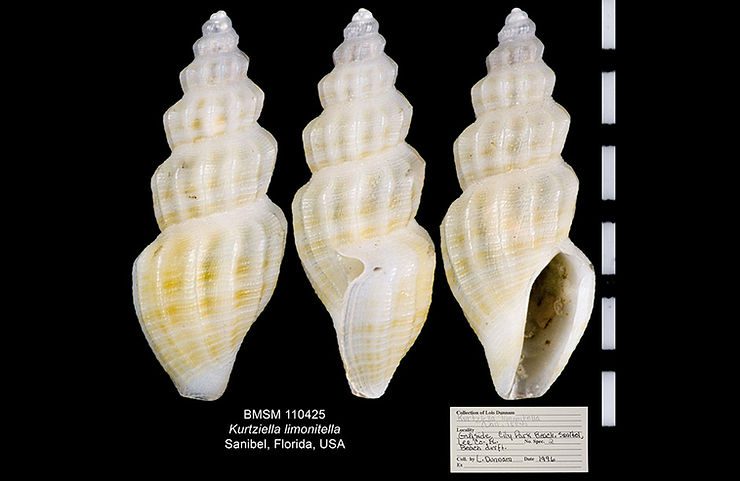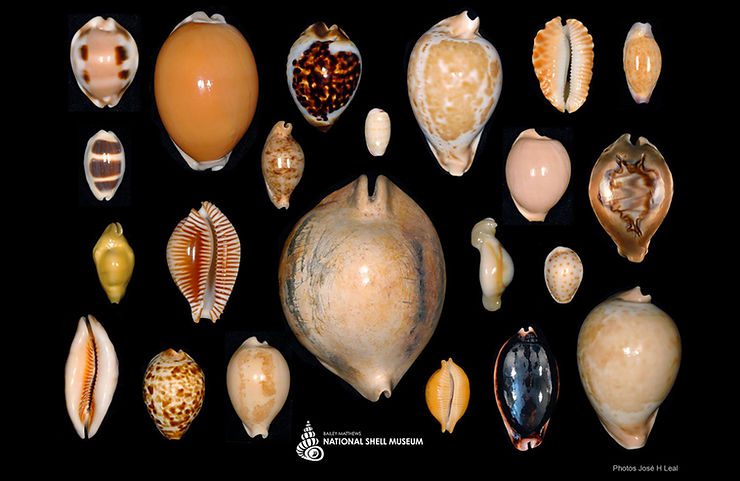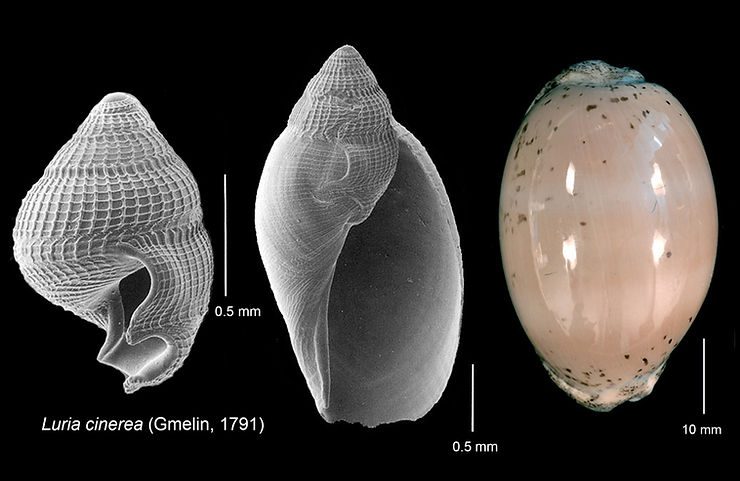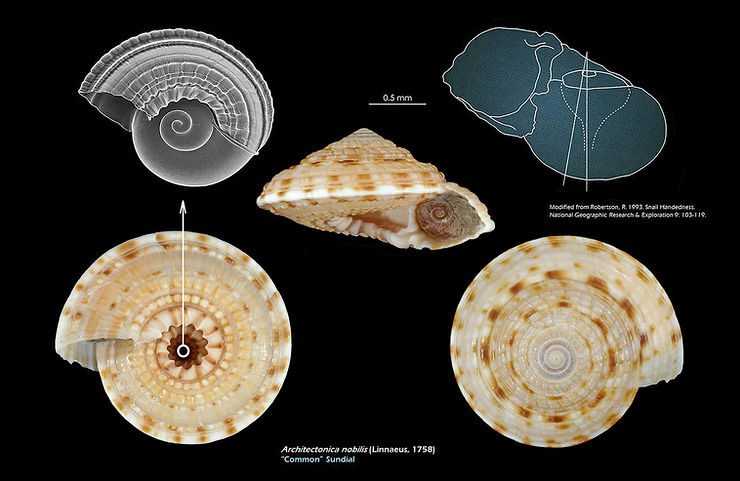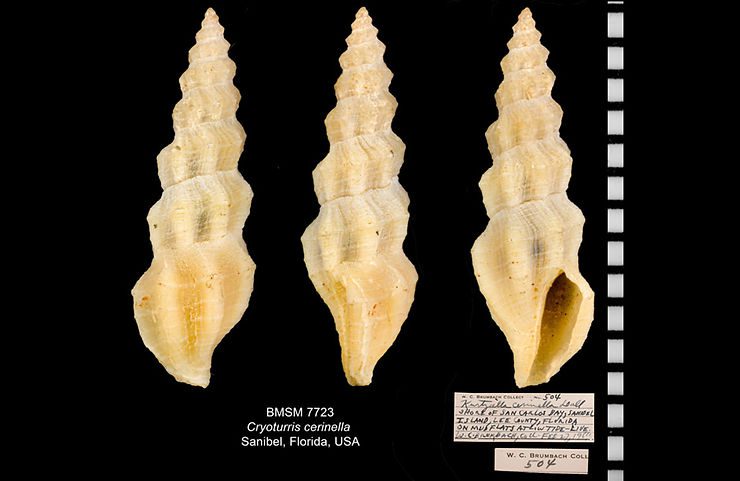
Shell of the Week: The Waxy Mangelia
One more member of the large family Mangeliidae, Cryoturris cerinella Dall, 1889) reaches about 12 mm (about 0.5 inch) in length. The shell is very elongate, tower-shaped, with a sculpture of 7–8 strongly angled ribs crossed by fine spiral threads.The aperture spans only about ¼–1/5 of the shell length. The shell color is yellowish–white, changing to (very) light–orange on last whorl.

